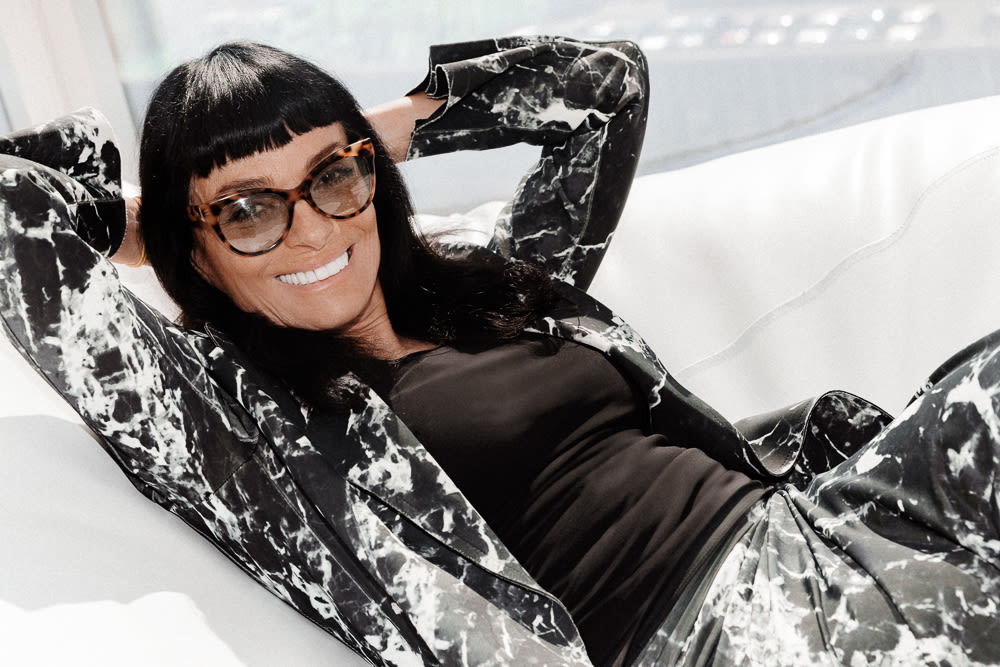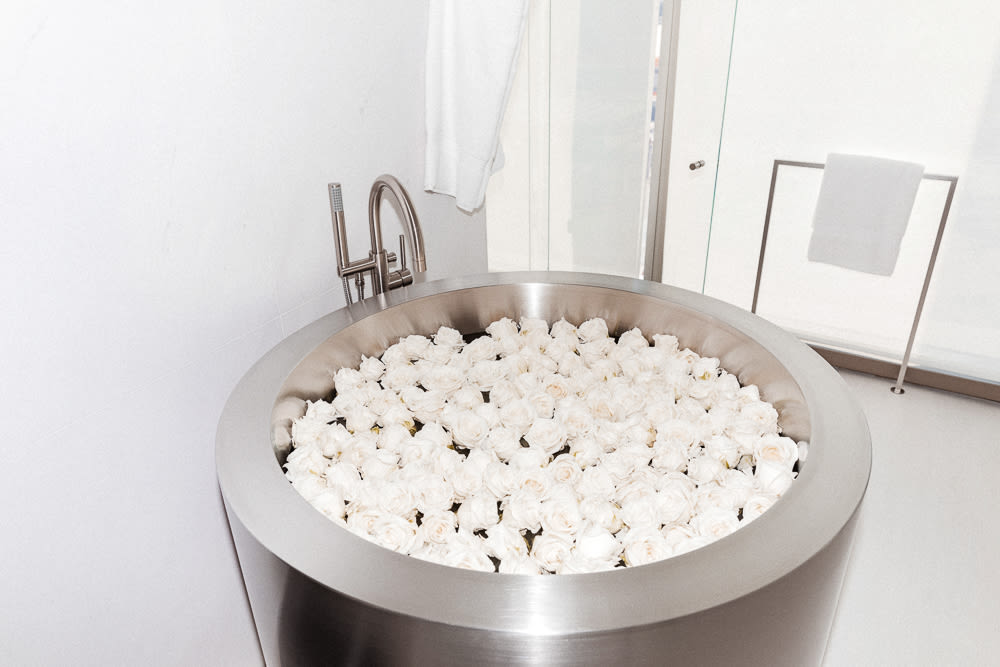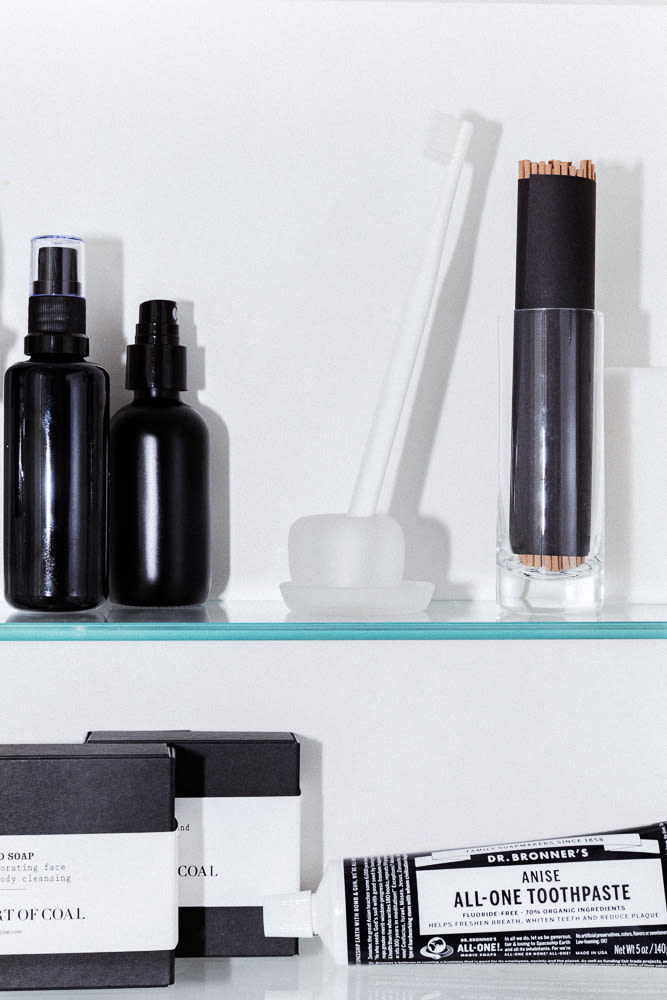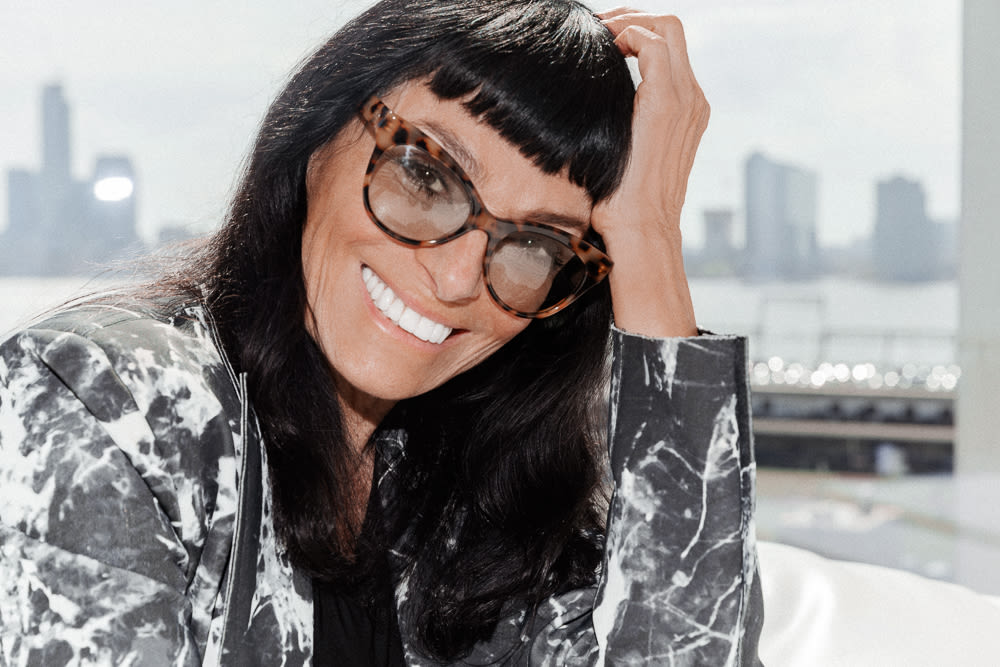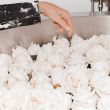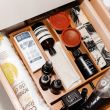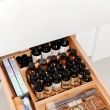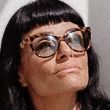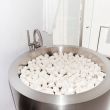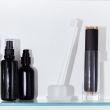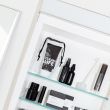"You tell me if my life wasn’t set in stone from the moment I was born: When I was a kid, my mother kept a book of every outfit that she made for me—sometimes we would have two or three changes a day—and she called it "Norma’s Life In Pictures." It was really her fashion catalogue. I liked athletics, I went swimming a lot—I was a real tomboy. But at one point I started to want clothes that my mother wouldn’t make me, so I made them myself. I didn’t know how to put in zippers, so I would sew myself into pants and carry a seam ripper and thread with me. I also liked wearing vintage clothes because I was obsessed with old movies—the more classic, the more beautiful. I ended up getting a scholarship to FIT for fashion illustration, and I really stood out there. Every girl looked like Mad Men, with the gloves, matching shoes, the whole thing—you know, coordinated. I have never been a matched person. [Laughs]
CAREER
When I got to my first job interview, the interviewer was sitting with his feet up on his desk, eating a tuna sandwich. He told me to put my portfolio down in the corner and come turn around for him. All I could think was, ‘Oh my God, if I don’t get this job, my mother will kill me.’ I was so humiliated and embarrassed, I ran out crying. I went straight to buy a New York Times to look for another job, and applied for one at Northwest Orient Airlines. Before I knew it, I was sitting behind a univac computer, and flying to London every weekend. My first trip, I remember passing a store with this music coming out of it—the Beatles. Every hair on my body stood straight up. It was the very beginning of what was about to happen, and I was in the right place at the right time. At the airlines they taught us all these very efficient packing techniques, and I would roll up clothes I found [in London], pack them in a garment bag, and walk through with my carry on. It was all Biba, Bus Stop—every time I came home, friends would look at my clothes and say, ‘Can you bring me this?’ By the second year of it, I figured I better open a store.
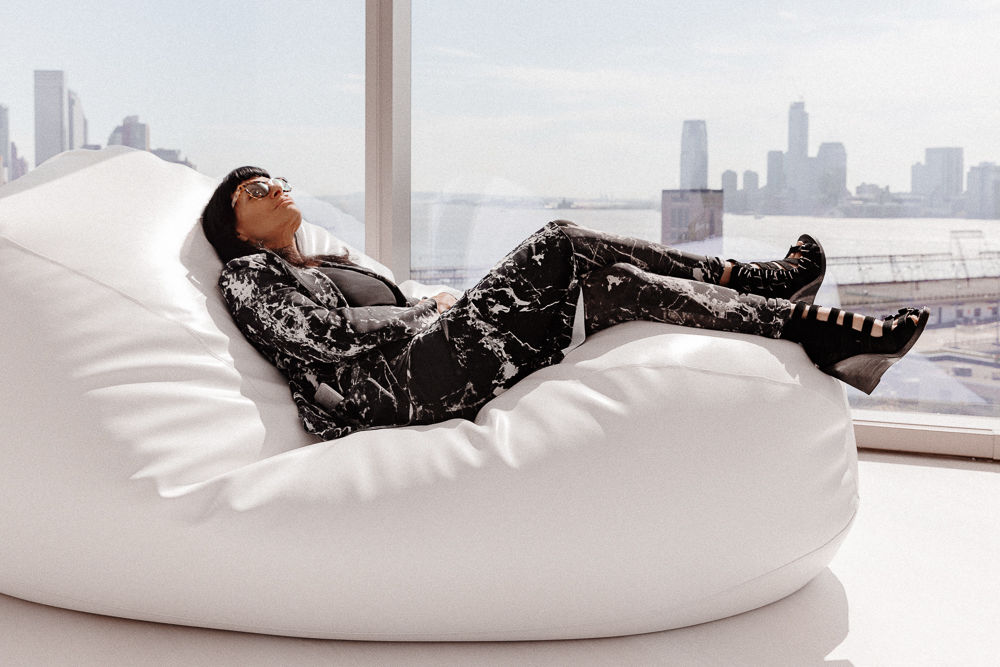
It wasn’t until the early ‘70s, when John Fairchild discovered Yves Saint Laurent, that people really started identifying as designers. For me, I just wanted things that I wasn’t seeing, and decided I would try to make them myself. I did hot pants, and we sold tons of those. I was 24 and in business for maybe a year when I had a full page in Vogue and a full page in Bazaar. But then I left my marriage, and had to leave my business along with it. This was just the beginning of the feminist movement, and women didn’t leave their husbands, or open businesses, so what I was doing was very disruptive. I didn’t know who to talk to. But I was living my dream to have a creative life, and how could I give that up? So I went out on my own as Norma Kamali. I knew I would have to struggle a bit more, or be more creative about how I could make money, but those are really good things to learn. If you want a creative life, you have to come out of your shell, communicate, and learn how to make money so you can pay people.
In the ‘70s, I found jersey—you have to understand, knits are a relatively new type of fabrication. There was no stretch in anything except girdle fabric and circus fabric, which is what I was making swimwear out of. Suddenly I found this knit that could move with the body. Then the next fabric was sweatshirt. You could buy sweatshirts at a college store or a men’s army navy store, but sweatshirting for women wasn’t anything. I thought, ‘Oh, I can make a whole collection in gray sweatshirting.’ Remember, ‘79 is still Studio 54, glitter, and color, and I was doing t-shirts, sweatshirting, and sneakers. It was so different. I knew that if I put it in my store, someone would steal the idea and I would see it in Bloomingdales. I got an appointment with Jones Apparel, this really big company that made professional clothes for women, and a friend helped me with what I should ask for in terms of licensing. The response to the collection was phenomenal. There were lines outside of department stores, and it was a huge hit right away.
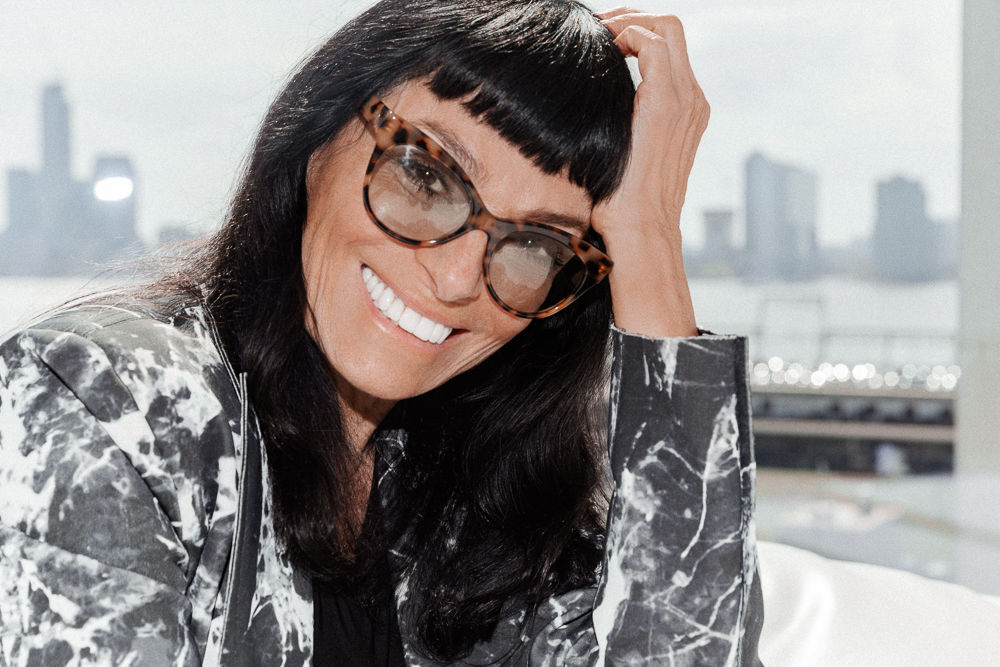
If you talk to different age groups, everybody has some other thing they know me for. There are some people who say sweats—true, active sportswear. And some say high-cut swim, and some say coats. I never really think about coats and swim in context of each other, but I think they have to do with my early tomboy times. The sleeping bag coat happened because I loved camping. I was camping with my friends in the early ‘70s, and it was a cold night, so I took my sleeping bag and wrapped it around me. I thought, ‘Woah, I can put sleeves on this, and it’s a coat.’ The concept is so simple, but genius—it’s really two coats, with an air pocket in between where the heat from your body meets the cold from outside and neutralizes it. That’s why you stay warm. The doormen at Studio 54 would wear the sleeping bag coats, and people would buy them with the hope of getting in. I didn’t discourage them. [Laughs] It’s been in and out of fashion so many times… The fashion industry has changed dramatically from decade to decade, and in my career there were five different generations of people who think in different ways. But when I was designing, I was always thinking about making clothes that would be the vintage of the future. To see that actually happen is really great. I still sell the same stuff now, and you wouldn’t know it’s from 30 or 40 years ago.
WELLNESS
[In the 1980s,] AIDS came out of nowhere. Everybody was sick, and some of my best friends were dying. The realization that a compromised immune system meant death was shocking. I started to do a tremendous amount of learning about how to have a strong immune system, and would go to retreats and lectures with Dr. Andrew Weil, Dr. Low Dog, and Michael Pollan. I learned from them about herbs, about plant-based diets, about pesticides. That was revolutionary—nobody was talking about that, and I was sort of pigeonholed as this wacky person when I did. I opened a little wellness cafe, and I would have speakers, show films, and introduce the community to some of these ideas. I also started selling juices. I wanted to make wellness inclusive and democratic, and all of a sudden, people came out of the woodwork. What I’ve learned through the years is there are some timeless products that always work, that everybody should know about to use and feel good. And then, you know, there are a lot of promises, and some things that aren’t as clear as they should be.

For me, the most important things are diet, exercise, and sleep—I’ve learned from experts that sleep is really 50-percent of that pie. When I prepare for bed, I put on something for sleeping that I really love, as if I were going out. Then I’m up for sure at 5AM, and in the office by 6:30. I’m totally a morning person. Most of the time I try for a 16-hour fast—I’ll have tea or lemon water when I wake up, and at 9 or so I’ll probably have a smoothie. My doctor told me I had issues with my bones, so I started making these smoothies with a high amount of calcium. I do lots of greens, blueberries, pre and probiotic powders, and then avocado to make it creamy. I just had a test on my bones, and they said I don’t have any indications of issues anymore. It was just from the loading up—in a smoothie you can do those quantities, and you don’t feel like you just ate 20 salads.
FITNESS
Recently, I saw a technique on Instagram called Safe Floor. It was developed by this dancer Alex Munz to treat and protect against injuries while building strength. I just had a session with him—it is crazy good. You do not sweat, you’re on the floor the whole time twisting like a towel, and I could feel every muscle. It’s sort of like yoga, it’s sort of like meditation, and you’re still getting a workout. New Yorkers are going to look at this and be like, ‘I don’t know,’ but it’s the thing you do two or three times a week to balance out everything else. I was a big interval training person, and I did Pilates for 10 years, but right now I like barre at Physique 57. It’s very close to me, and I find it to be a great workout. I like to play basketball, too—there’s a court right down the street. The tomboy is still alive and well. [Laughs]
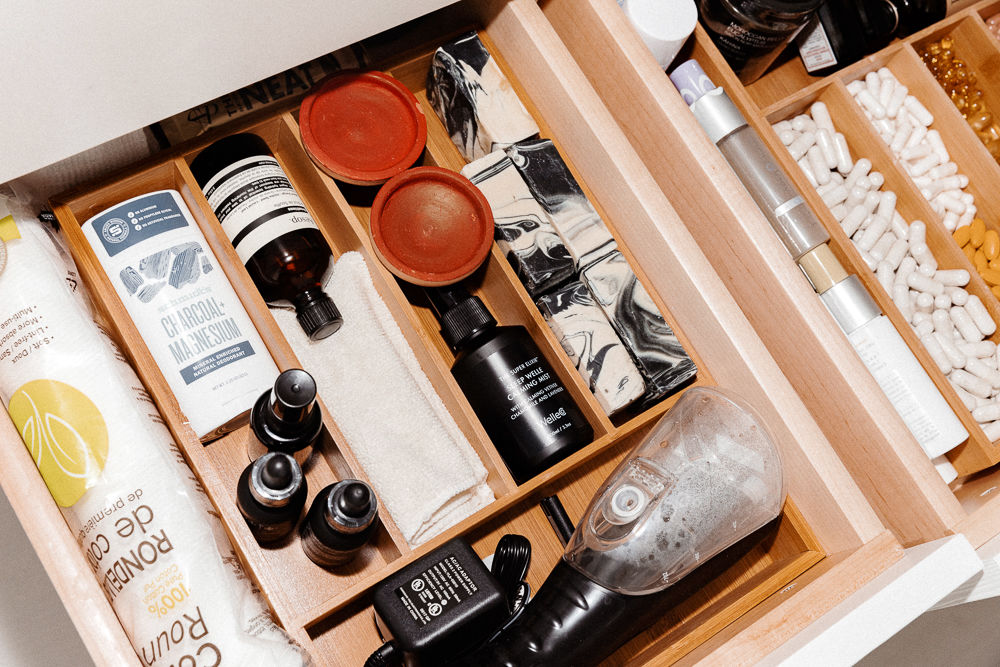
MAKEUP
I had red hair for 15 years, and I wore red lips and red nails for a long period of time. It was Yves Saint Laurent No. 36, a blue-red. Then I became friends with Horst Rechelbacher, who developed Aveda. His mission was to show the toxic effects of beauty products on the women who used them, and I heard it—do you see red lips and red nails? No more! Now I use lip balm from Hurraw. But I am still a Maybelline girl, and I like the mascara in the yellow tube. Or maybe I’ll do my eyes with the Expert Wear pencil. I don’t put that much on. I also love these clay pots with poppy flower from Morocco. You just take a brush, wet it, and you can put this on your eyes, your lips, or your cheeks. It’s really beautiful, and it’s a stain, so it stays.
SKINCARE
Once when I was in China, I was looking at my girlfriends, thinking they all had such beautiful skin. I said, ‘What are you guys doing?’ And they all said they get acupuncture facelifts. I came back, and I called my network, and I said, ‘I need a really good acupuncture doctor on the east coast.’ They kept coming up with this one name, Dr. Yang, who was in Philadelphia. I drove two hours to see him, and the next morning, somebody in my office said to me, ‘You look really good today.’ He comes to New York now, so I see him on Mondays. I’ve tried Botox, I’ve tried those blood facials—I’ll take needles, but I don’t want to go under the knife. Something that changes your face forever is just too scary to me.
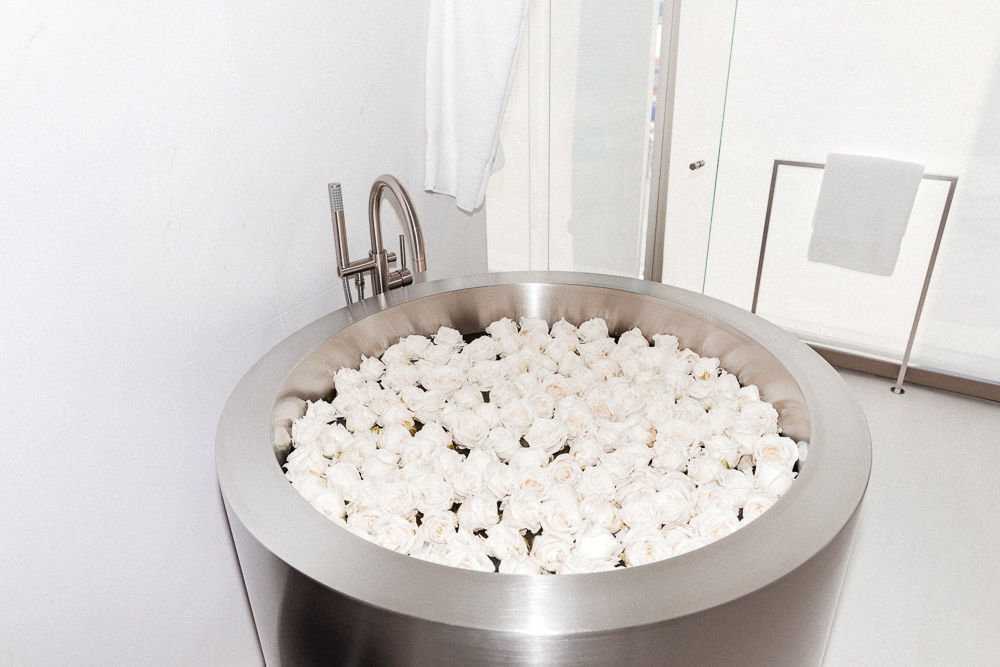
In the ‘90s I put this concept together for NormaLife, where you have four products [Ed note: available in July] that you use for face and body—a cleanser, an exfoliant, a moisturizer, and a tanner. The scent is calming, and the first thing you smell is eucalyptus, but it also has patchouli, cedarwood, and bergamot. Olive oil is a key ingredient for me, because hardly anybody is allergic to olive oil, and charcoal. The cleanser is a charcoal and aloe blend. The exfoliant is made with ground olive pits, and you take time to massage it all over your face and body, and then you rinse. Glow [the tanner product] is produced by fermented beets—everything is plant-based.
HAIR
I chose this hair so I didn’t have to be high maintenance with it. I wash it, and maybe once a week I’ll blow dry it. I use Pai-Shau volumizing shampoo, but what I’m really addicted to is the mask. It is so fantastic. The ingredients are really great, and it keeps your hair from frizzing up. Bangs are so easy—for me, it’s timeless, and I don’t have to think of different styles. I cut it myself, but I get it dyed every three weeks by someone else. The color I use is ammonia-free, and I’m trying a different dye than I usually use right now. It’s made my hair blacker, and I’m not sure if I like it—I think it’ll fade, but I’m probably more comfortable with dark brown. If I didn’t dye it, I think it would probably be all gray and white. I thought about maybe letting it be, but then I think my hair would be more important than anything else. I’m not ready for that, and I’m not sure that I ever will be."
—as told to ITG
Norma Kamali photographed by Tom Newton in New York on April 23, 2019.
